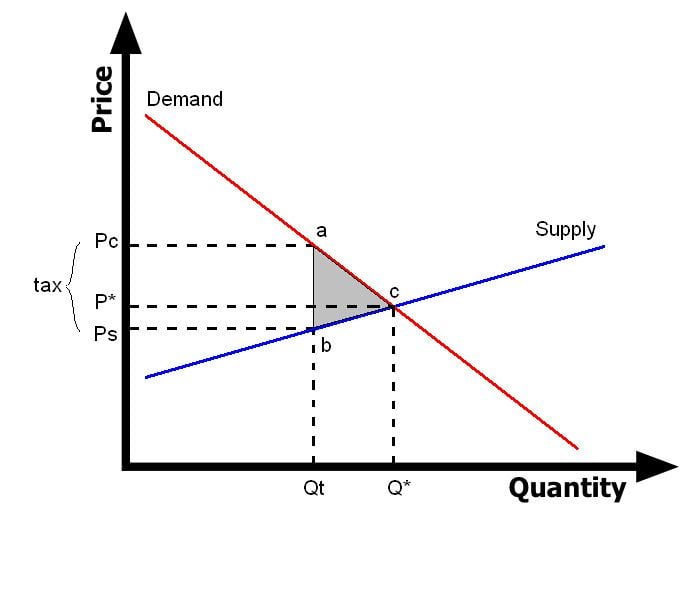 | ||
The tax wedge is the deviation from equilibrium price/quantity as a result of a taxation, which results in consumers paying more, and suppliers receiving less.
Following from the Law of Supply and Demand, as the price to consumers increases, and the price from suppliers decreases, the quantity that each wishes to trade will decrease. After a tax is introduced, a new equilibrium is reached, where consumers pay more (P* → Pc), suppliers receive less (P* → Ps), and the quantity exchanged falls (Q* → Qt). The difference between
While both consumers and suppliers pay some portion of the tax, the distribution depends on the structure of the supply and demand curves, respectively. As long-run supply curves tend to flatten over time, consumers tend to pay an increasingly larger portion of the tax.
